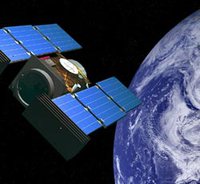
The NASA Stardust mission returned hundreds of samples of dust and small rocks from comet Wild 2. Like other Jupiter Family Comets, Wild 2 is believed to have formed beyond Neptune and stored in the Kuiper Belt until its recent migration into the inner solar system. Laboratory analyses of the comet samples provide a remarkably detailed look at the nature of solar nebula materials the resided at the edge of the solar system at the time that planets formed. Isotopically anomalous pre-solar grains have been found in the comet but their abundance is surprisingly low and it is clear that the bulk of micron and larger comet grains formed in the solar system by high temperature processes. The comet contains fragments of familiar high temperature components such as CAIs and chondrules that are well studied components of primitive meteorites. Common components formed in the 1400 to 2000K range These findings show that there was efficient radial transport of 1-100µm grains over distances of 10’s of AU. The comet seems to be a well preserved “grab bag” of components that formed in hot regions of the solar nebula. The low survival rate of pre-solar silicate grains at the edge of the solar nebula disk also suggests a low survival rate of pre-solar organics. It is clear that cometary icy and rocky materials formed in different environments. Stardust provided no information on ices but did it collect cometary organics including glycine. Comet-like bodies were probably the dominant form of planetesimal in the solar nebula and the Wild 2 results provide a very detailed look at the materials that made such bodies at the edge of the solar nebula.
 A Talk With Jim Green
A Talk With Jim Green What Can Extant Genomes Reveal About Early DNA Metabolism?
What Can Extant Genomes Reveal About Early DNA Metabolism? What We Talk About When We Talk About Earth's Oxygenation
What We Talk About When We Talk About Earth's Oxygenation Bowling With Astrobiologists: A Twisted Path Toward the Origin of DNA
Bowling With Astrobiologists: A Twisted Path Toward the Origin of DNA